20 Days in Italy: Returning Visitors Who Need To See More
This 20 day Italy itinerary is made for returning travelers, showcasing small towns, local food, and authentic regions most visitors miss.
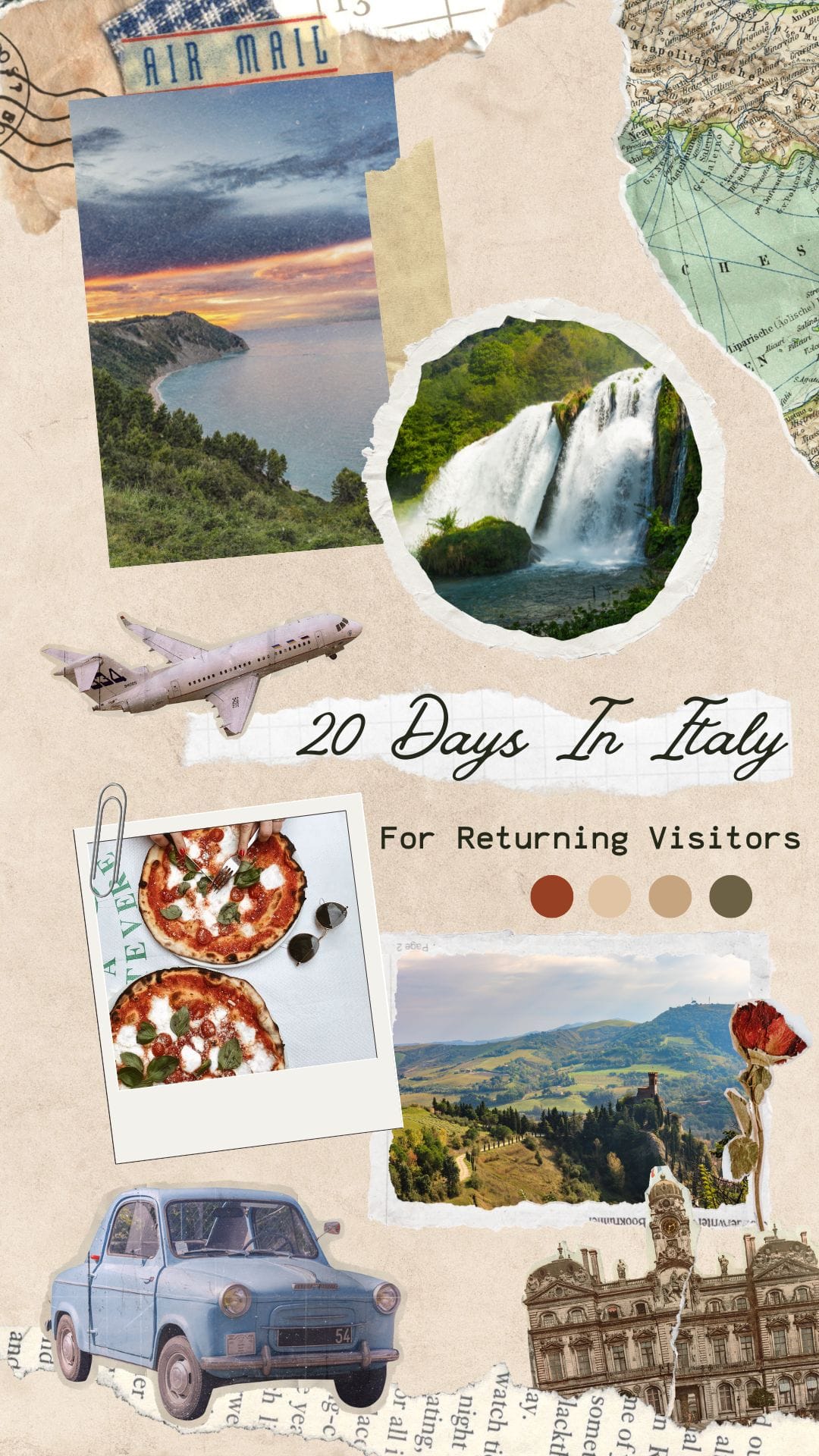
If you’ve already strolled through Rome, Florence, and Venice, this 20 day Italy itinerary offers something different. You’ll travel through regions often overlooked by first-time visitors — from hill towns in Umbria to beaches in Puglia, from the Dolomites in the north to baroque cities in Sicily. Expect fewer crowds, authentic food experiences, and landscapes that range from alpine peaks to Mediterranean coastlines.
| Day | Location | Main Focus |
|---|---|---|
| 1 | Bologna | Arrival & Medieval Streets |
| 2 | Bologna | Piazza Maggiore, Basilica of San Petronio |
| 3 | Modena | Balsamic Vinegar & Ferrari Museum |
| 4 | Parma | Parmigiano Reggiano & Prosciutto di Parma |
| 5 | Perugia | Historic Center & Piazza IV Novembre |
| 6 | Assisi | Basilica of St. Francis & Hilltop Views |
| 7 | Orvieto & Cascata delle Marmore | Cathedral, Caves & Waterfall |
| 8 | Alberobello | Trulli Houses & Local Dinner |
| 9 | Ostuni | Whitewashed Town & Coastal Stop |
| 10 | Lecce | Baroque Architecture & Orecchiette Pasta |
| 11 | Palermo | Markets & Street Food |
| 12 | Cefalù | Beach, Old Town & La Rocca |
| 13 | Agrigento | Valley of the Temples |
| 14 | Palermo | Leisure Day & Transfer to Catania |
| 15 | Taormina | Greek Theatre & Seaside Charm |
| 16 | Mount Etna | Volcanic Landscapes & Vineyards |
| 17 | Catania | Markets & Baroque Piazzas |
| 18 | Dolomites | Arrival & Mountain Villages |
| 19 | Dolomites | Seceda, Lago di Braies & Alpine Views |
| 20 | Dolomites | Leisure Morning & Departure |
Days 1–4: Emilia-Romagna (Bologna, Modena, Parma)
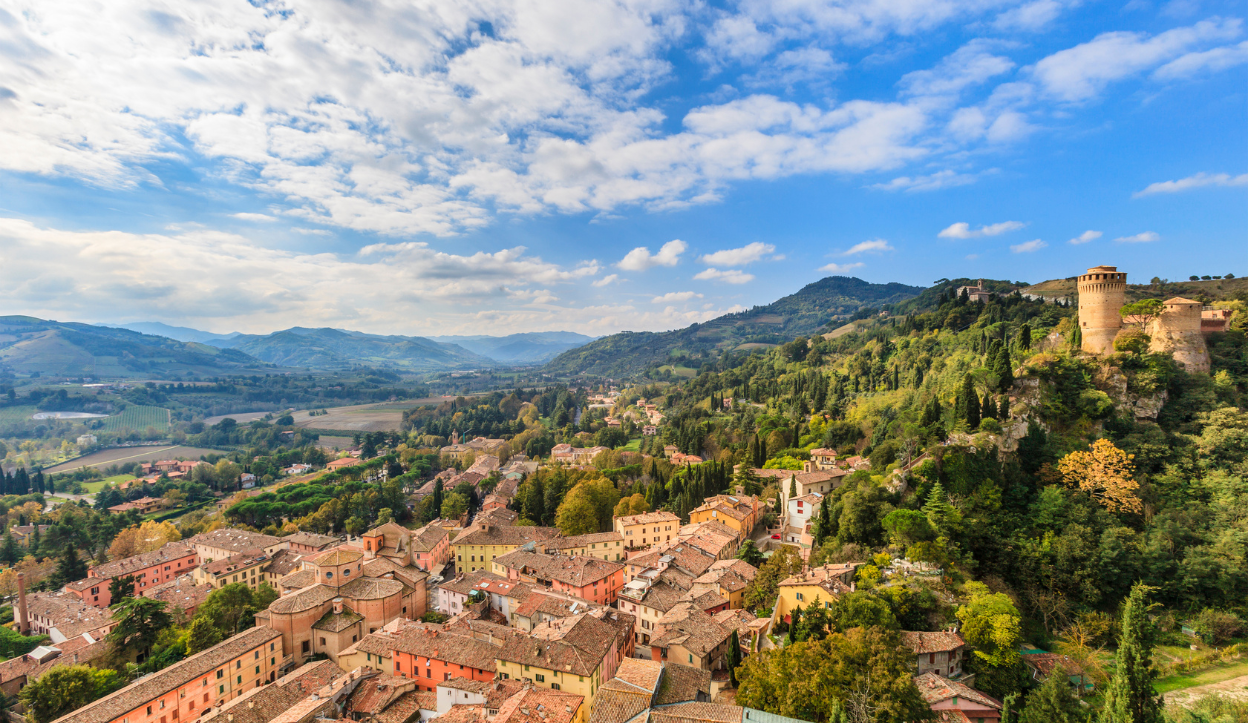
Emilia-Romagna is Italy’s food capital, where every meal feels like a celebration. Bologna sets the tone with its medieval porticoes, lively piazzas, and hearty pasta dishes. Nearby Modena is famous for its balsamic vinegar and Ferrari heritage, while Parma is the birthplace of Parmigiano Reggiano cheese and Prosciutto di Parma. Together, these cities deliver an incredible mix of culture, history, and unforgettable flavors.
Highlights
Bologna’s medieval streets, Traditional Balsamic Vinegar of Modena, Museo Ferrari, Parmigiano Reggiano cheese and Prosciutto di Parma.
Daily Itinerary
- Day 1: Arrive in Bologna. Wander under the city’s endless Porticoes of Bologna, climb the Asinelli Tower for views, and enjoy your first plate of tagliatelle al ragù.
- Day 2: Spend the day in Bologna, exploring Piazza Maggiore, the Basilica of San Petronio, and local food markets. In the evening, sample Mortadella and regional wines.
- Day 3: Day trip to Modena. Visit a traditional acetaia to learn about aged balsamic vinegar, then explore the Museo Ferrari before dining in Modena’s historic center.
- Day 4: Day trip to Parma. Tour dairies that produce Parmigiano Reggiano, taste Prosciutto di Parma, and explore Parma’s charming streets before returning to Bologna.
Days 5–7: Umbria (Perugia, Assisi, Orvieto)
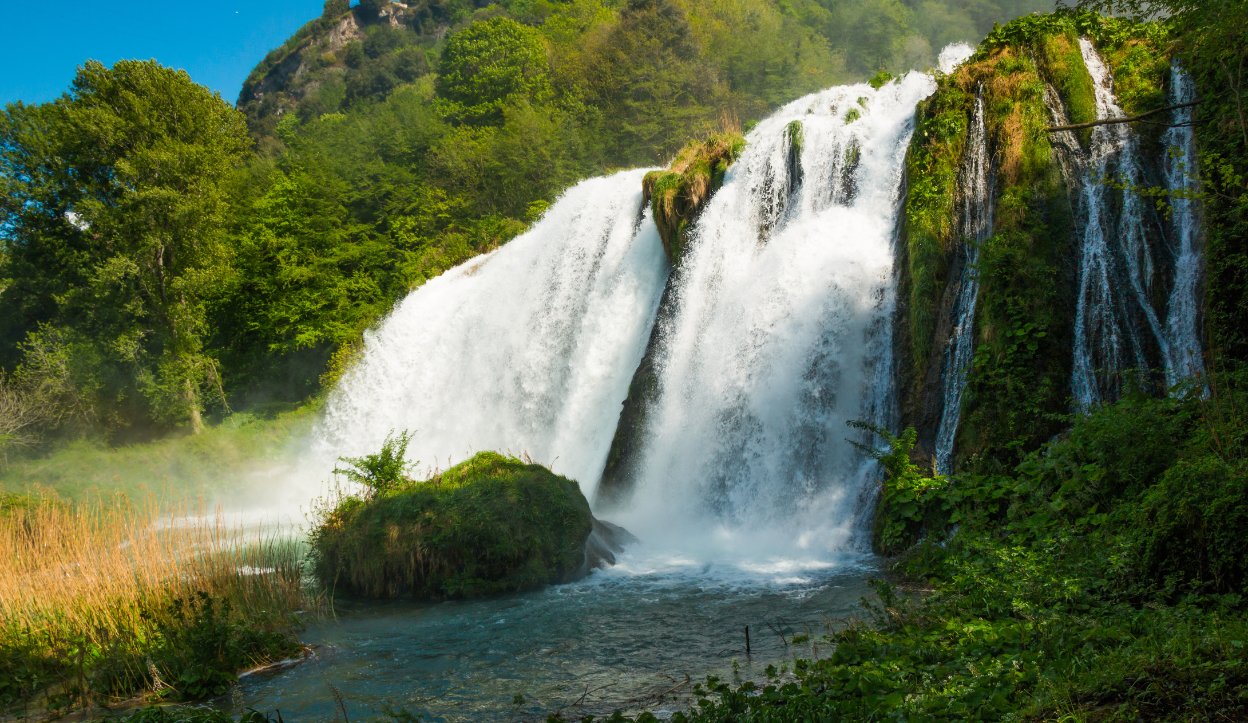
Umbria is often called the “green heart of Italy,” a quieter alternative to Tuscany filled with medieval hill towns, olive groves, and peaceful countryside. From the historic streets of Perugia to the spiritual aura of Assisi and the dramatic cliffside setting of Orvieto, this region feels timeless. Adding a visit to Cascata delle Marmore, one of Europe’s tallest man-made waterfalls, brings a touch of nature’s drama to the journey.
Highlights
Perugia’s historic center, Basilica of Saint Francis of Assisi, Orvieto Cathedral, Cascata delle Marmore.
Daily Itinerary
- Day 5: Travel to Perugia and explore its medieval core, walking through Piazza IV Novembre and along Corso Vannucci before enjoying dinner at a local trattoria.
- Day 6: Day trip to Assisi. Visit the Basilica of Saint Francis of Assisi, stroll through peaceful lanes, and enjoy the hillside views before returning to Perugia.
- Day 7: Spend the day visiting Orvieto’s grand cathedral and underground caves, then stop at the Cascata delle Marmore to experience the impressive waterfall before continuing your travels.
Days 8–10: Puglia (Alberobello, Ostuni, Lecce)

Puglia, set in the heel of Italy’s boot, feels refreshingly different from the rest of the country. Whitewashed towns sparkle in the sun, olive groves stretch for miles, and the food celebrates simple, bold flavors from the sea and land. Here you’ll find trulli houses in Alberobello, the “white city” of Ostuni perched on a hill, and the baroque beauty of Lecce, often called the Florence of the South.
Highlights
Alberobello’s trulli houses, Ostuni’s whitewashed streets, Lecce’s baroque architecture, olive oil and seafood.
Daily Itinerary
- Day 8: Arrive in Bari or Brindisi and transfer to Alberobello. Explore the trulli district with its cone-shaped stone houses, and enjoy a traditional dinner nearby.
- Day 9: Visit Ostuni, known as the “white city,” with its narrow alleys, hidden courtyards, and sweeping views to the Adriatic. Spend the afternoon in a coastal town such as Polignano a Mare.
- Day 10: Travel south to Lecce. Wander through its ornate baroque churches and palaces, enjoy a relaxed piazza lunch, and savor local specialties like orecchiette pasta before moving on.
Days 11–14: Sicily (Palermo, Cefalù, Agrigento)
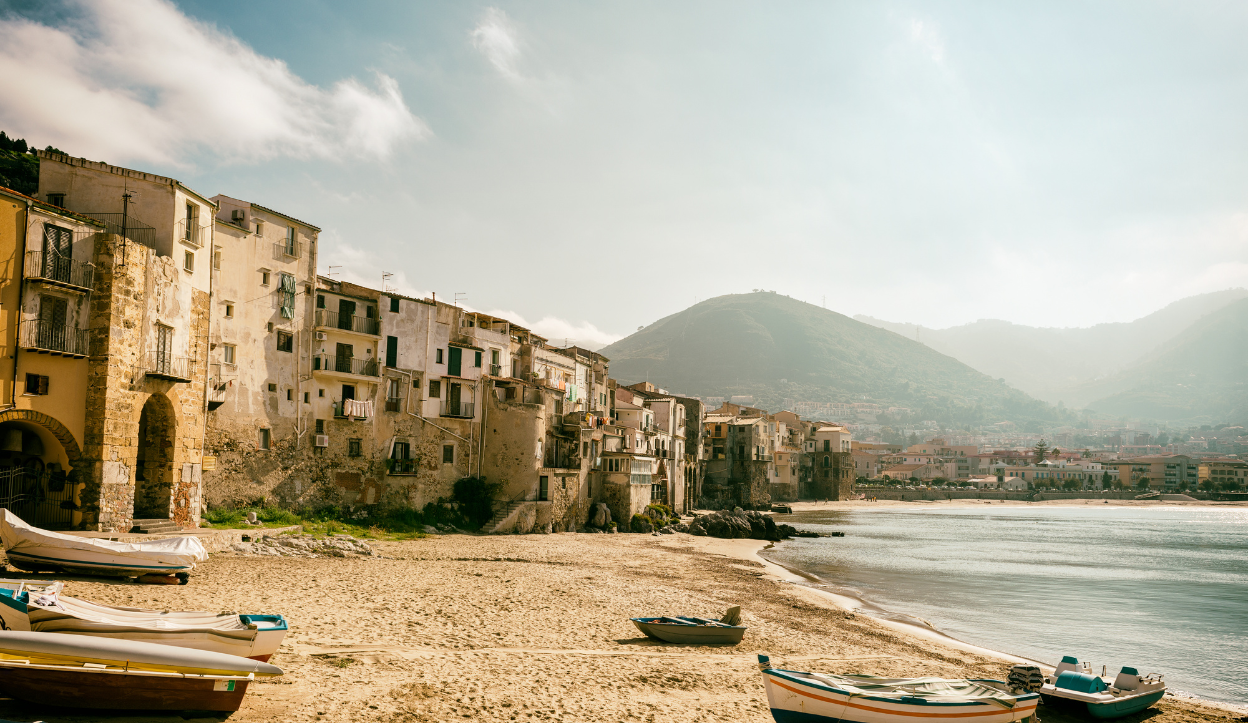
Western Sicily is a mix of ancient ruins, lively street life, and seaside charm. Palermo welcomes you with bustling markets, layered architecture, and some of the best street food in Italy. A day trip to Cefalù offers sandy beaches and a postcard-worthy old town at the foot of dramatic cliffs. In Agrigento, the Valley of the Temples takes you back to the days of ancient Greece, with massive columns standing proud against the Sicilian sun.
Highlights
Palermo’s lively markets, Cefalù’s coastline, Valley of the Temples in Agrigento.
Daily Itinerary
- Day 11: Arrive in Palermo and explore its historic core. Wander through Ballarò or Capo Market, sample arancini and panelle, and admire the city’s mix of Arab, Norman, and baroque architecture.
- Day 12: Take a day trip to Cefalù. Relax on the golden beach, climb La Rocca for sweeping views, and stroll the narrow streets of the old town before returning to Palermo.
- Day 13: Travel to Agrigento and spend the afternoon exploring the Valley of the Temples, home to some of the best-preserved Greek ruins outside Greece.
- Day 14: Enjoy a slower morning in Palermo — perhaps a final walk through its piazzas or a coffee by the harbor — before flying or transferring east to Catania.
Days 15–17: Eastern Sicily (Taormina, Mount Etna, Catania)
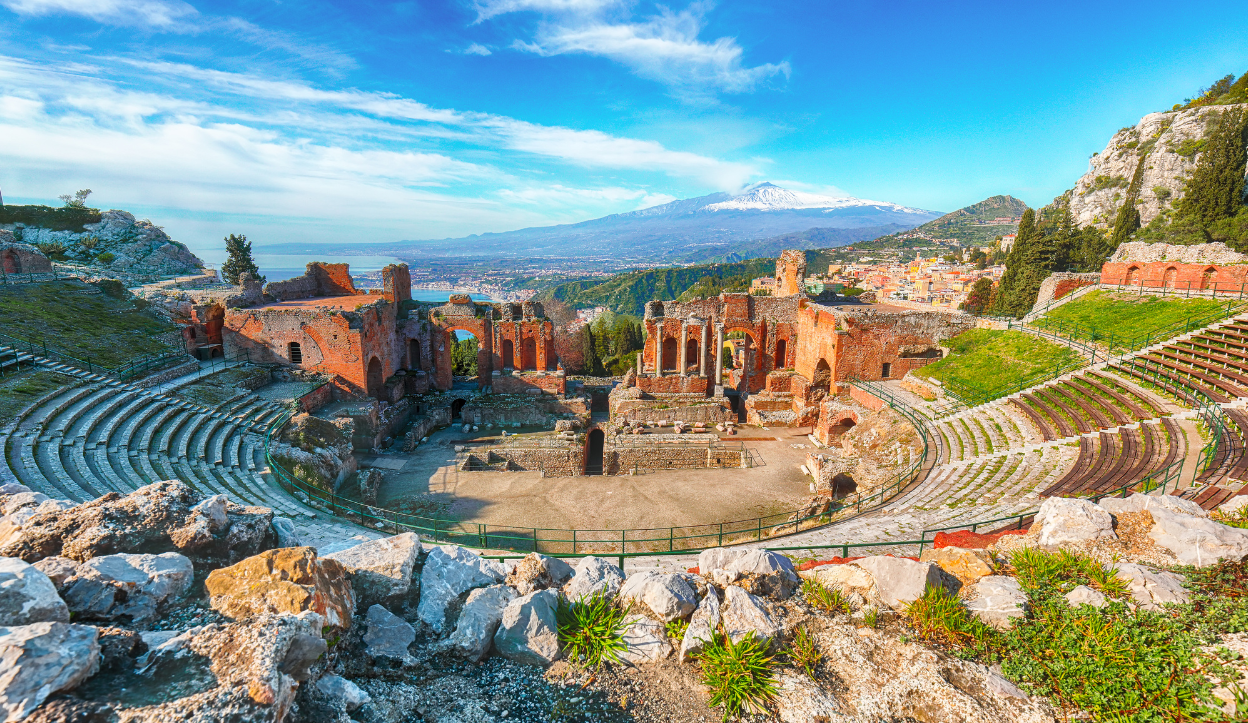
Eastern Sicily offers a different side of the island, where volcanic landscapes meet seaside beauty and lively cities. Taormina is a hilltop gem overlooking the Ionian Sea, with charming lanes and an ancient Greek theater that frames Mount Etna in the distance. A day trip up the volcano brings craters, lava flows, and dramatic views, while Catania delivers a lively mix of markets, baroque piazzas, and bold Sicilian flavors.
Highlights
Taormina’s Greek Theatre, Mount Etna, Catania’s markets and baroque piazzas.
Daily Itinerary
- Day 15: Travel east to Taormina. Stroll its elegant streets, browse artisan shops, and take in the views from the Greek Theatre of Taormina, where the backdrop of Mount Etna and the Ionian Sea is unforgettable.
- Day 16: Spend the day exploring Mount Etna. Choose a guided hike, ride the cable car toward the summit, or explore the volcanic craters and lava fields, with vineyard stops in the fertile foothills.
- Day 17: Head to Catania. Wander through Piazza del Duomo, visit the lively La Pescheria market, and enjoy bold Sicilian flavors before preparing to continue your journey.
Days 18–20: The Dolomites

Ending your trip in The Dolomites will feel like another world within Italy, with jagged alpine peaks, green valleys, and small villages that reflect both Italian and Austrian traditions. This region is ideal for hiking, scenic drives, and simply soaking in mountain beauty. Even if you’re not a hiker, you’ll find cable cars, panoramic viewpoints, and charming towns that make it easy to experience the landscapes.
Highlights
Dolomites, Lago di Braies, Seceda, Val Gardena, alpine villages and mountain cuisine.
Daily Itinerary
- Day 18: Fly into Verona or Venice and transfer into the Dolomites. Settle into a village such as Ortisei or Cortina d’Ampezzo and enjoy a relaxed evening surrounded by alpine scenery.
- Day 19: Spend the day exploring iconic Dolomite sights. Take a hike or cable car to Seceda for sweeping ridge views, then visit Lago di Braies, one of Italy’s most photographed lakes.
- Day 20: Enjoy a leisurely morning — perhaps a short walk in Val Gardena or a hearty alpine breakfast — before traveling back toward Verona or Venice for your onward journey.
Additional Tips
Transportation:
- Use trains for Bologna–Umbria–Puglia.
- Fly from Puglia to Sicily.
- Fly from Sicily to northern Italy for the Dolomites.
Food to Try:
- Bologna: Tagliatelle al ragù, mortadella
- Umbria: Truffles, porchetta
- Puglia: Orecchiette pasta, seafood crudo
- Sicily: Cannoli, arancini
- Dolomites: Speck, mountain cheeses
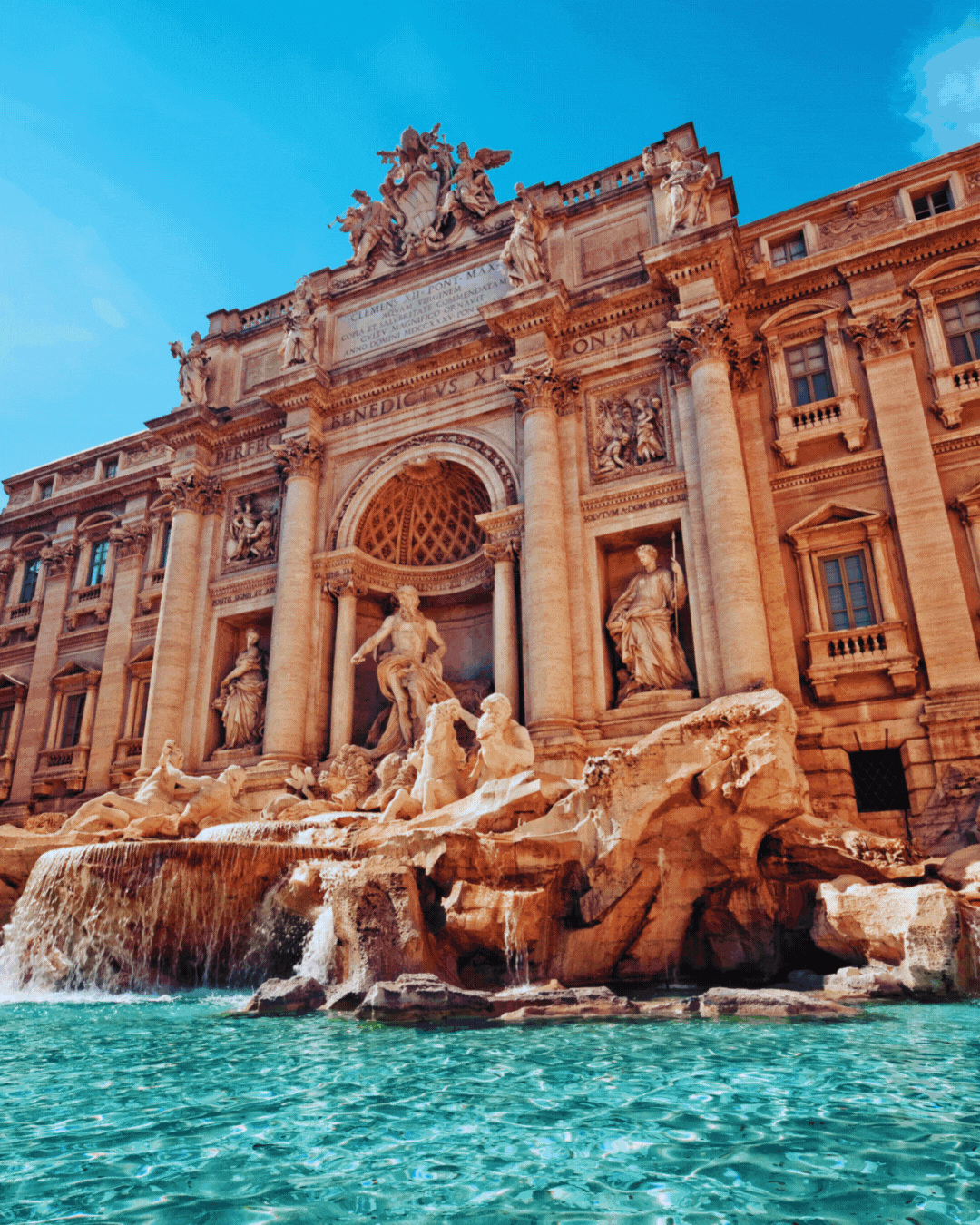
This itinerary highlights Rome, Venice, and Florence, with time for the Amalfi Coast at the end, giving you a mix of history, art, food, and seaside charm in just over a week.

This itinerary covers Rome, Florence, and Venice, with time in Tuscany and the Amalfi Coast, blending history, art, food, and scenic coastlines into a well-rounded trip.

This itinerary balances Rome, Florence, Venice, and the Amalfi Coast with time in Tuscany and Cinque Terre, giving you a mix of history, art, food, and seaside relaxation. It’s the perfect amount of time for a first full trip to Italy.

This itinerary combines world-famous cities like Rome, Florence, and Venice with smaller villages, wine country, scenic coastal drives, and time on the islands. Expect a month filled with history, food, landscapes, and plenty of opportunities to slow down and enjoy la dolce vita.

Discover everything you need to know to help you plan your trip to Italy! The best cities, parks, beach destinations, and more.
Not A Member? ✈️
Save 40%-95% On Flights With Jetsetter Alerts Airline Mistake Fare & Flash Sales Alerts!
